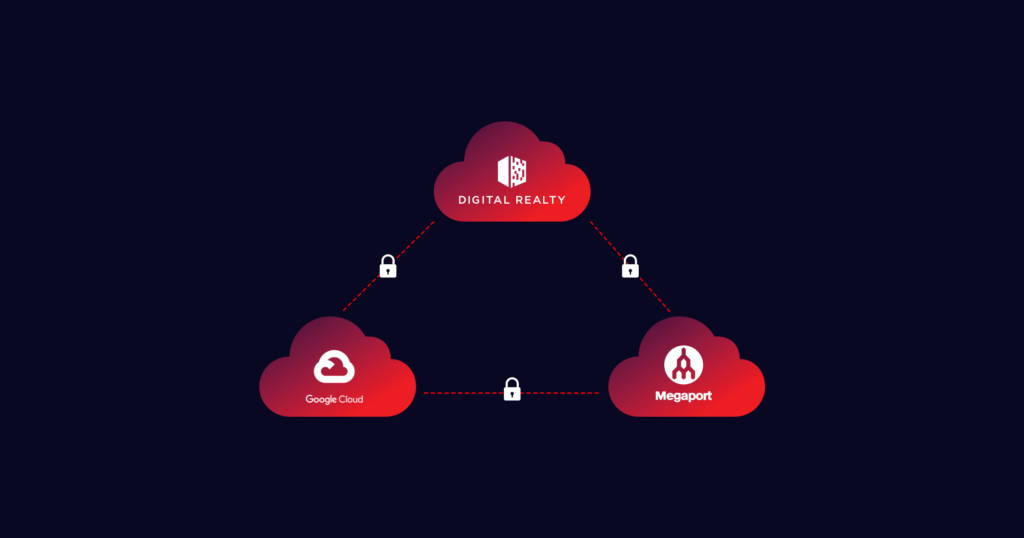
How to Overcome NaaS Integration Challenges
- Cloud networking
- September 29, 2025
- RSS Feed
By Paul McGuinness, Head of Solutions Europe
Overcome legacy hurdles and maximize the benefits of NaaS with this smart integration guide.
Co-authored by Fabio D’Avino
As network teams constantly search for new ways to simplify and optimize their networks, it helps to hear from experts who have spent years at the center of these transformations.
One of these voices is Fabio D’Avino, a specialist in Network as a Service (NaaS) with more than seven years of experience researching, designing, and building global network services across industries.
Fabio’s research explores the realities of NaaS adoption from every angle: executive, operational, and engineering. By addressing not only the opportunities but also the challenges, his work helps organizations overcome hesitation and confidently embrace the benefits of NaaS.
Fabio shared some of his insights with the Megaport team, and we’re excited to share them with you, too.
Navigating integration complexity in the transition to NaaS
Thanks to its agility, scalability, and cost-efficiency, NaaS is the perfect complement to hybrid and virtual network architectures. Plus, for IT buyers, the path to NaaS adoption is full of opportunities to simplify and scale their operations.
But while the benefits of NaaS are well known, this path to adoption is not without its obstacles, including integration complexity – an often underestimated challenge that can impact timelines, budgets, and operational continuity.
What does integration complexity actually involve, and how can you mitigate it to get the full benefits of NaaS?
The hidden cost of legacy systems
For many organizations, their network is a mix of legacy infrastructure, traditional MPLS-based WANs, and newer cloud-based architectures. These legacy systems, often built up over decades, can’t be easily dismantled or replaced as they’re usually tightly coupled with business-critical applications, compliance protocols, and essential operational workflows.
When IT decision makers consider adopting NaaS, they must first consider that their legacy solutions were never designed to integrate with modern, cloud-native services. Connecting the old with the new requires custom workarounds, additional middleware, or “transitional hybrid architectures”, all of which add layers of complexity and cost.
More than just a technical challenge
Integration complexity isn’t just a technical issue – it’s a strategic and financial one. For IT buyers and technical professionals, NaaS integration comes with several risks when not managed proactively:
- Project delays: Integrating legacy systems with NaaS platforms often takes longer than teams anticipate. Compatibility issues, a lack of standardized APIs, and vendor lock-in can all stall progress.
- Operational overhead: Managing a hybrid network that includes both legacy systems and NaaS can increase the burden on your IT team. Tools, skill sets, and processes must adapt to accommodate two very different networking models.
- Increased costs: Running both legacy and NaaS networks in parallel—often necessary during phased transitions—can almost double infrastructure costs temporarily. Licensing, support, and training all contribute to a growing TCO (Total Cost of Ownership).
- Security gaps: Inconsistent security policies and fragmented control across legacy and modern systems can expose vulnerabilities. For as long as integration is incomplete, aligning your different security postures will pose a challenge.
On the other hand, several benefits wait on the other side of successful integration:
- Lower TCO: Virtualized infrastructure and on-demand usage models reduce capex and align costs with actual usage.
- Flexibility: Scale bandwidth and shift network resources between locations to keep pace with evolving needs.
- Stronger security and compliance: Apply consistent security policies across distributed environments with greater agility, visibility, and control.
- Streamlined network management: Simplify orchestration, deployment, and day-to-day operations by using APIs and automation to reduce manual workloads.
- Faster time to market: Provision services in minutes to speed up cloud adoption, app rollouts, and business expansion.
- Global reach with local control: Connect to cloud regions, data centers, and service providers worldwide with centralized management.
- Built-in resilience: Improve network reliability with dynamic pathing, failover capabilities, and geographic diversity baked into the NaaS fabric.
- Vendor independence: Avoid lock-in with carrier-neutral options that allow you to choose and switch providers without overhauling your network.
- Hybrid and multicloud support: Integrate public cloud, private cloud, and on-prem infrastructure seamlessly.
- Improved visibility and analytics: Get real-time insights into performance, traffic patterns, and potential issues with built-in monitoring and analytics tools.
Hybrid connectivity: A necessary bridge
Most IT teams don’t have the luxury of undertaking a “rip and replace” strategy, which can temporarily impair operations or even halt them entirely. Instead, they must adopt a phased migration approach where hybrid connectivity—supporting both legacy and cloud-native environments—serves as a bridge to a NaaS-first network setup.
But while a hybrid model supports business continuity, it brings its own set of challenges not to overlook:
- Routing and policy management: Applying consistent routing policies across legacy VPNs and cloud-based SD-WANs can be complex and prone to error.
- Data synchronization: Real-time synchronization between on-prem systems and cloud environments requires careful orchestration and monitoring.
- Performance monitoring: Visibility across hybrid environments is fragmented. Traditional monitoring tools may not provide the insights needed for dynamic, cloud-based workloads.
Other strategies to address integration complexity
While a hybrid transition model is useful during your NaaS integration, you can’t just set and forget. But combined with the right strategy, tools, and partners, you can streamline your transition to NaaS.
Here are a few best practices:
- Assess and inventory: Begin with a complete assessment of your current network landscape. Identify which systems are candidates for early migration and which require longer-term hybrid support.
- Leverage APIs and automation: Modern NaaS platforms usually offer robust APIs, and even more advanced automation and orchestration tools. Investing in these tools can simplify integration tasks and reduce manual errors.
- Adopt a layered approach: Use abstraction layers to decouple legacy systems from new infrastructure where possible. This allows for smoother integration with minimal disruption to your existing operations.
- Choose the right NaaS partner: Not all NaaS providers are created equal. Look for vendors with proven experience in hybrid cloud, multicloud, and other complex architectures, as well as a wide global footprint and a large solutions suite.
- Plan for coexistence: Accept that legacy and modern systems will need to coexist for some time. Design your architecture with this in mind, ensuring that each part of your network can evolve independently without breaking the whole.
Integration complexity is solvable
By proactively addressing integration complexity, you can take the risk out of your NaaS integration journey. It’s not about avoiding complexity altogether – it’s about managing it strategically and turning a challenging transition into a competitive advantage.
Partnering with an industry-leading NaaS provider is a must to make this a reality.
Discover how Megaport can support your NaaS integration journey with a personalized demo.





